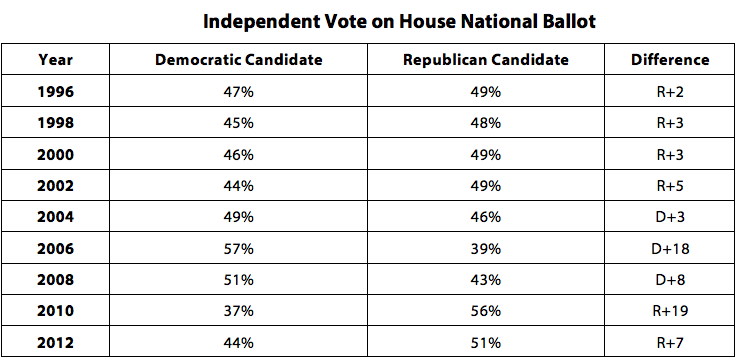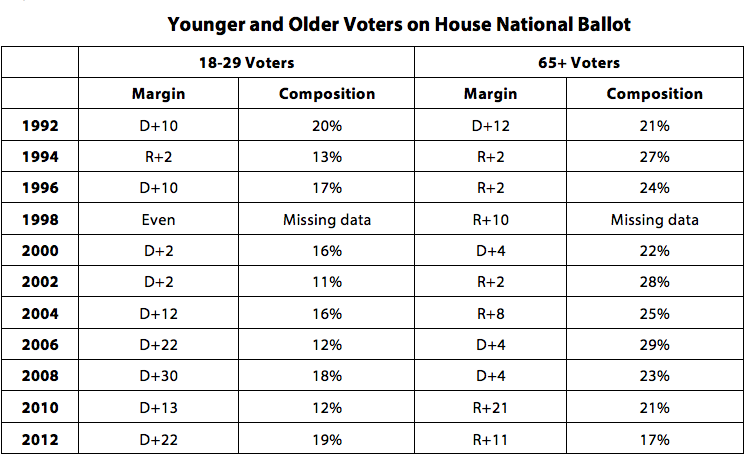What We’re Watching on Election Day

1. How many moderates do Senate Democratic candidates need to win?
In the most contested Senate races, we estimate that Democratic candidates will need an average of 65% of the moderate vote to win. Based on the likely ideological breakdown of the electorate in each state and the share of liberals and conservatives each candidate is expected to win, we estimate how many moderates each candidate needs:
- Alaska: Sen. Begich 68%
- Arkansas: Sen. Pryor 72%
- Colorado: Sen. Udall 65%
- Georgia: Michelle Nunn 69%
- Iowa: Rep. Braley 64%
- Kansas: Greg Orman 67%
- Kentucky: Sec. Grimes 67%
- Louisiana: Sen. Landrieu 72%
- Michigan: Rep. Peters 56%
- New Hampshire: Sen. Shaheen 52%
- North Carolina: Sen. Hagan 67%
2. How many Independents do Republicans win on the House National Ballot?
In 2006, Democrats won Independents on the House National Ballot by 18 points—taking control of the House of Representatives for the first time since Republicans captured the chamber in 1994. In 2010, Republicans won Independents by 19 points—gaining control back. Double digit margins among Independents are rare and may signify a wave.

3. Can Democrats turn out and win enough younger voters?
Historically, there has been only a small (or nonexistent) gap in older and younger voters’ candidate selection. However, in recent elections this gap has widened to more than 30 points, with Democrats winning younger voters by unprecedented margins. Compounding this trend for Democrats is the drop off in the youth vote in midterm elections. These two factors make both the composition of the electorate and the margin among younger voters a key indicator for Democrats.

4. How big is the gender gap in House voting?
Democrats tend to win female voters while Republicans win male ones. In 2006, Democrats won women by 12 and men by 4 on their way to flip the House. In 1994, Democrats only won women by 6 and lost men by 16. In 2010, Republicans won women by 1 and men by 14. A good year for Republicans will be winning men by double digits and losing women by single digits.

5. Does nonwhite and Hispanic turnout rival presidential or midterm years?
In the 2010 midterm elections, 77% of voters in the House national exit poll were non-Hispanic whites. By contrast, that figure was 72% in 2012. The margins Democratic candidates have been able to run up among the nonwhite and growing portion of the electorate has been crucial to recent victories—and central pillars in the Obama Coalition. But the risk for Democrats is that these voters tend not to turn out in midterms. Will the 2014 electorate look more like presidential years (good for Democrats) or midterms (good for Republicans)? What will Democratic performance be among nonwhite and Hispanic voters?

House Exit Polls:
“House Exit Polls,” The New York Times, Accessed November 3, 2014. Available at: http://elections.nytimes.com/2012/results/house/exit-polls.
Subscribe
Get updates whenever new content is added. We'll never share your email with anyone.
